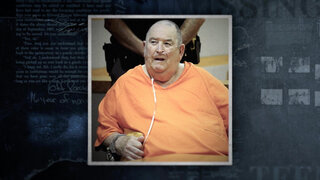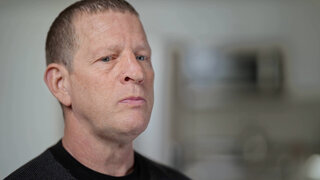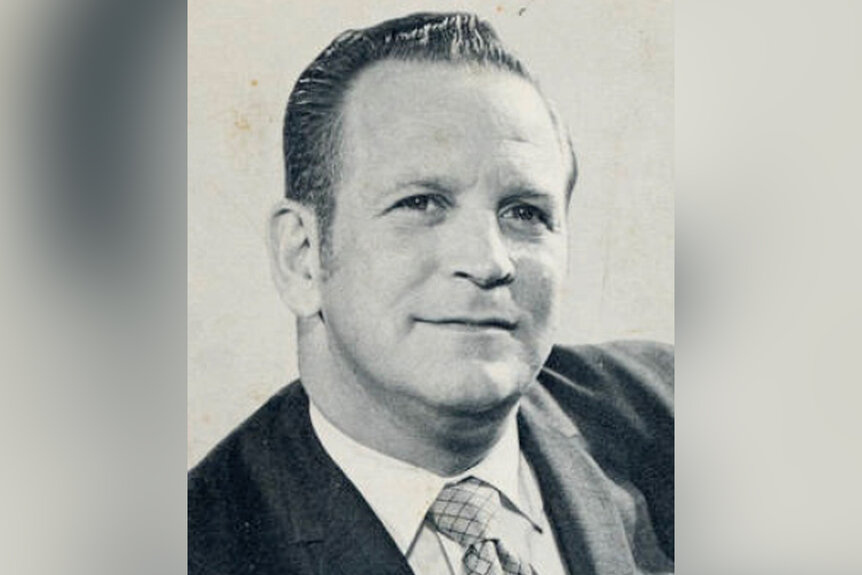Create a free profile to get unlimited access to exclusive videos, breaking news, sweepstakes, and more!
‘You’re Gonna Want To Put A Needle In My Arm’: How An Elderly Serial Killer Confessed His Way To The Death Penalty
A serial killer, Edward Wayne Edwards, left behind a trail of death, forcing family to reckon with his gruesome crimes.
In Watertown, Wisconsin, Timothy Heck and his girlfriend, Kelly Drew, were attending a wedding reception on August 9, 1980 at the Concord House, a local venue.
The 19-year-old high school sweethearts were looking toward the future. He wanted to be a farmer. She’d just finished beauty school.
They had plans to meet friends after the party, but the couple vanished without a trace.
After 48 hours the Jefferson County Police Department launched a missing persons investigation for the couple, according to “Living with a Serial Killer,” airing Saturdays at 9/8 on Oxygen.
Area police forces joined in the search for Hack and Drew, whose clothing were found a few miles from the Concord House. The situation turned from a missing persons case to something more sinister.
Police questioned Concord House employees, including handyman Edward Wayne Edwards, who said he had no information.
Weeks after the articles of clothing were found, two decomposing bodies were discovered in a wooded area that were later identified as Hack and Drew.
No weapon was found at the scene, but the crime appeared to be a stabbing. Ligature marks also indicated strangulation. The presence of semen on Drew’s clothing also led to suspicion of a sexual assault.
The crime became known as the Sweetheart Murders. Despite an extensive police investigation, detectives eventually run out of leads. At the time, John Edwards, the handyman’s son, was just 9 years old. In "Living With A Serial Killer," he recalled the search parties and helicopters. He also said he remembered that just after the discovery, his father hurriedly moved the family, including his four siblings, out of the area.
The family was often on the move, John Edwards told producers, as his father was a troubled man.
“I don't think he knew how to control his emotions,” he said. “There was some type of rage there.”
In 2008, Richard Luell, now retired as a special investigator with the Wisconsin Department of Justice, asked that the nearly 30-year-old Sweethearts Murder case be reopened.
“As I was reaching my retirement age, DNA was making drastic leaps and bounds,” he said, adding that he thought scientific advances might advance the cold case.
Luell approached the case with vigor — and a hunch. He believed that the odds were strong that police had actually interviewed the killer and that name would be on file.
After two months of digging into the files, the name that stood out to him was Edward Wayne Edwards, who fled the area with his family after the murders.
Investigators questioned witnesses about the handyman. They told him that he was short-tempered and volatile, a man who’d beat up his kids and wife and was “basically a monster.”
Luell also learned that Edward Wayne Edwards, who was born in 1933, was raised in an orphanage and spent time in juvenile detention. More criminal activities followed, including an armed bank robbery in the 1960s in Akron.
Arrested in 1962 for the robbery, he spent five years behind bars. When he got out, he married and started a family. He claimed he turned his back on crime and wrote a book about it, but it was all a front, according to John Edwards.
“He's not this changed individual. It's just his alibi and his way to continue to get away with doing bad,” he said.
His father’s pattern of getting jobs, piling up debt, and then fleeing to another area took hold.
Luell’s team knew they had one surefire way to connect Edward Wayne Edwards to the Sweethearts Murder — the DNA sample left on Drew’s clothes. They eventually tracked him and his wife to a trailer park in Louisville, Kentucky.
By that time he was 74 years old, obese, and relying on oxygen to breathe. He grudgingly agreed to have an oral swab to collect a DNA sample.
At a crime lab in Wisconsin, Edward Wayne Edwards' DNA and the genetic material at the crime scene matched. On July 30, 2009, he was arrested and brought to Wisconsin.
At that time, John Edwards was 37 and worked for an insurance company. He had purposely moved far away from his abusive father. Still, he considered how his life and his mother’s life would change with this news.
“What I've thought is what do people think of my mother living with him?” he told producers.
In April 2010, Edward Wayne was convicted and handed a double life sentence for the 1980s Sweetheart Murders.
Wisconsin had no death penalty, which meant Edward Wane would spending his remaining years in prison — a thought that held no appeal, according to "Living With A Serial Killer."
“He's been in and out of prison. He knows what the life is like. He’s not a guy that wants to be sitting in a prison ward somewhere and dying a slow death,” said retired homicide detective Fil Waters.
So Edward Wayne Edwards seized control of the situation. He sent a letter to the Ohio prosecutor's office. In it, according to Brookellen Teuber, Assistant District Attorney, Jefferson County, Wisconsi, Edwards made a provocative statement.
He wrote that once officials knew what he had to share, “You’re gonna want to put a needle in my arm.”
Edwards confessed to killing 21-year-old William “Billy” Lavaco and 19-year-old Judith Straub in Park Norton, Ohio, the Associated Press reported in 2010.
The similarity to the Sweetheart Murders — another young couple killed — was striking. But in a twist, it turned out that at the time of the murder, the death penalty was unconstitutional. Edward Wayne Edwards’ plan backfired.
But he hadn’t played his last hand yet. Edward Wayne Edwards then confessed to murdering his 23-year-old foster son Dannie Boy Edwards in 1996 with a shotgun. The motive? Getting the payout of the young man’s life insurance worth $250,000, according to the Associated Press.
On March 8, 2011 Edward Wayne Edwards was sentenced to death for the murder of Danny Boy Edwards. He died later that year behind bars from natural causes before the execution.
John Edwards has moved on with his life but the past still haunts him.
“When I look back now as an adult, I feel very fortunate that I'm still alive,” he said.
To learn more about the case, watch “Living with a Serial Killer,” airing Saturdays at 9/8c on Oxygen, or stream episodes here.



































